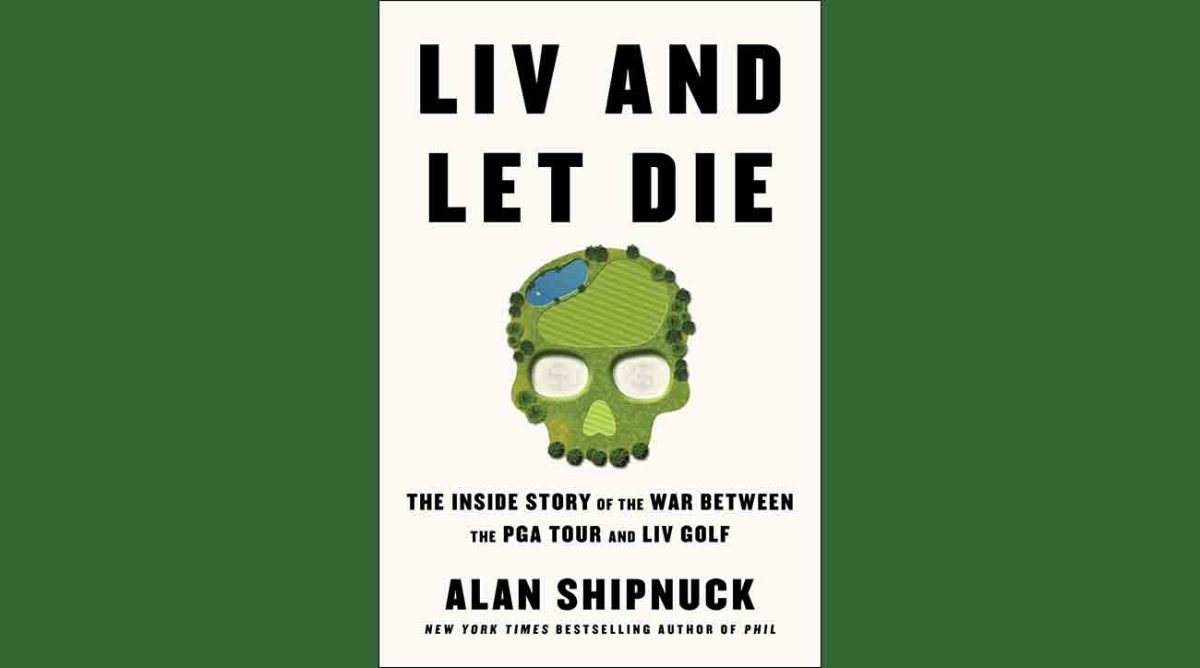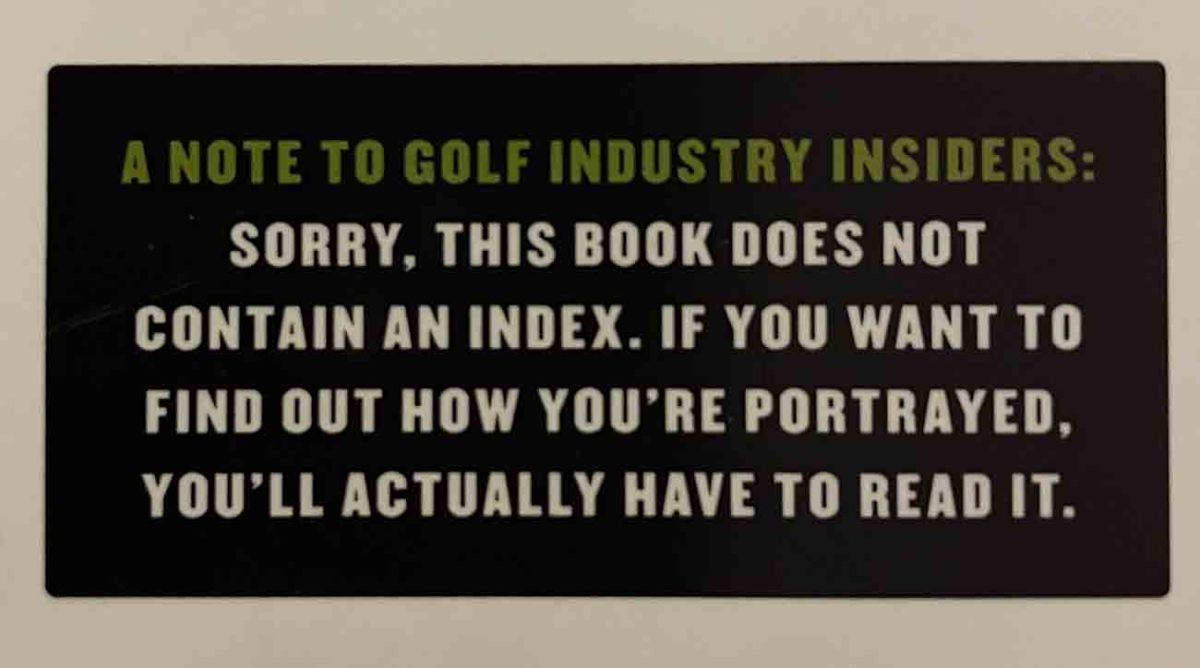Q&A: Alan Shipnuck on ‘LIV and Let Die,’ the Definitive Book on LIV Golf’s Tumultuous Existence

There are good writers who can’t report and terrific reporters who can’t write, but Alan Shipnuck is a master of both the art and science of sports journalism. A workhorse who doubles as a wordsmith in a medium compromised by so many factors in recent years, Shipnuck’s ninth book, LIV and Let Die, is a comprehensive chronicle of the most scurrilous conflict in golf history—a slugfest full of blood, sweat and fears since it invaded public consciousness in the spring of 2022.
At age 50, Shipnuck’s latest project was a daunting task with haunting deadlines and a fluid mission, given that a resolution to the matter is still months away. The author discusses all those challenges and more in this coast-to-coast interview with Sports Illustrated.

Sports Illustrated: Was there a point or occurrence at which this book became a reality—when you knew you had to write it?
Alan Shipnuck: It all came together really fast, honestly. The Mickelson book came out in May 2022 and with Phil coming out of his exile the following month at LIV London, I felt like I had to be there, even though summer had just started with my kids and all that stuff. There had been a whole lot of chatter the entire week about what was going on, how the story was spinning out of control. From London I flew into Boston for the U.S. Open, and on the flight home I’m like, you know what? This is an incredible story. It has every element you could ever want. Huge branding protagonists and all these themes that transcend golf: loyalty, betrayal, legacy, greed, vengeance, then of course you had the geopolitical overtones with the Saudi money and all the complicated questions surrounding that. Just too good a story. The biggest golf story of the century that doesn’t involve Tiger Woods.
SI: Was the absence of an index your idea or someone else’s?

AS: The publishing schedule was incredibly tight and indexes take a lot of time. They’re labor-intensive. The text was still evolving even as we went to the printer, so functionally, it just wasn’t really possible.
SI: You were pretty rough on [LIV Golf CEO] Greg Norman up front. How much of what he has said publicly over the last 21 months would you classify as bulls---? Do you think his intentions are truly honorable? How much of LIV Golf’s existence can be attributed to his long-standing grudge with the PGA Tour?
AS: Yeah, Norman’s a fundamental character, and he’s fascinating on so many levels. Whatever the unit of measurement is—trophies, dollars, World Ranking points, Hall of Fame votes—the guy has had a spectacular life. And yet, it seems like there’s a hole that can never be filled within him. This constant need for validation and adulation, recognition. His grudge with the Tour is a very real thing. They humiliated him, marginalized him, turned him into a pariah. He’s been bitter for so many years. At the same time, he’s always had a big-picture perspective on golf. He recognized its global appeal long before anybody in Ponte Vedra Beach did.
He understands international markets. He’s clearly a very sharp businessman. Part of what makes this book so fascinating to me is, very few characters are [depicted in] black and white. The good guys have some skeletons. The bad guys have some redeeming qualities. Norman can be the hero. He can be the antihero, the villain—it all depends on your point of view. I think a lot of what Norman says is genuine. I think he believes in golf as a global force. Is he prone to bluster and overstatement and bulls---tery? Clearly. He’s had a lot of opportunities to put his foot in his mouth and he’s made good use of them.
SI: Did any particular subject prove elusive, evasive or contentious in the Q&A process?
AS: Everybody was evasive. Even the people I got to talk on the record, it took a lot of work. Everyone was suing everyone. There was a potentially huge blowback for any of the players who spoke publicly. I had to go back to a lot of guys over and over before they’d talk to me. A couple of them told me things off the record, and I went back to them and was able to nudge them to attribution. It was a constant dance. There was this real sense that if they said the wrong thing, they could get cancelled.
The PGA Tour guys were a little more forthright, but the governance issues were very sensitive. Jay [Monahan] had clearly made some mistakes, and the board had not done its duty in a lot of ways, so the players who had public roles wanted things to be known, but they didn’t want to put their name on it. Everybody was elusive. It was an extremely challenging project in terms of gathering information. So much of it happened in the shadows. Everything was done in secret.
SI: Having completed this project, are there any factual loose ends or unanswered questions that gnaw at you?
AS: People have said, “How can you put the book out now? We don’t know the end of the story.” I would argue we do. There are only three possible outcomes to the framework agreement. It will be consummated as is, or it will be altered through the influx of private equity money, which would dilute the Saudi influence and make it more palatable to the American public, the U.S. Congress, the players and fans. Or it’s all just gonna blow up and they’ll go back to being mortal enemies. I go over all these scenarios in the final chapter. There were some things I was told that were really juicy but I could never lock down from a fact-checking perspective.
I’m still working on them because there will definitely be a new chapter for the paperback, so the chase isn’t over, but I’m content. I left it all on the field, as they say.
SI: I despise LIV as a golf fan but love it as a journalist. Do you have your own schmaltzy take on the conflict?
AS: LIV has been a gift from the content gods. A boring, sleepy, tired old sport was just injected with an unparalleled amount of juice, energy, bitchiness and controversy. Covering this story has been like riding a bucking bronco. Whether you love LIV or hate LIV, you’d have to admit it hasn’t been boring.
SI: How much did the June 6 “agreement” affect the tenor or direction of the book?
AS: There’s a funny bit to this. The book was due June 5. I stayed up late the night before, and it was a monumental struggle to get it done, but June 5 was one of the most joyous days of my life. Then I woke up the next day, and everything had changed. It didn’t really affect the book from top to bottom, but it affected the end of the book. I added 15,000 words to the back, and that really made it a better book. We have a complete tale here. Of the three scenarios I mentioned earlier, I think the private-equity possibility is the most likely, but I feel like I’m covered no matter what happens.
SI: What’s your overall impression on how Monahan has handled this matter?
AS: This whole story starts with the Premier Golf League, and Monahan was pretty masterful in thwarting the PGL. They had promises of $500 million in capital from the Saudis, and Monahan basically killed it without leaving a drop of blood on the carpet. I think he’d be a really fun guy to go on a golf trip with. He’s a fundamentally good person. Everybody who knows him likes him, but it’s just irrefutable that he made some crucial missteps in this whole thing. It’s all laid out in the book. In the spring of 2021 the Saudis came to him offering to partner, wanting to have a conversation and hoping to invest in the PGA Tour. Monahan wouldn’t meet with them.
Instead he went into the board meeting and announced, “We are at war.” I would think he’d have a fiduciary duty to at least have the conversation. These are people you can leverage and exploit—there are a lot of things you can do with that money. To not go down that road remains flabbergasting. He’s the one who took a business issue and made it personal. He demonized the Saudis, made their money dirty and turned this into a moral question for his players. By bringing in the 9/11 families? That’s what opened him up to so much criticism, when he turned around and partnered with these very same people he made into the enemy.
A lot of it is very second-guessable, and yet he may salvage the entire situation. With or without the Saudi money, the PGA Tour is going to be completely reshaped. It will become a for-profit entity. When Monahan gets that done, the Tour will have access to a ton of money, and its long-term health will be secured, but from the standpoint of his reputation, it will come at a great cost.
SI: Last week’s OWGR snub of LIV appears, at least on the surface, to be a severe setback. How much does it affect the big picture? Does it encourage the proposed union of the two rivals or discourage it?
AS: The ruling was interesting. It affirmed that golf’s establishment is still going to line up against LIV, which has been cocky in demanding ranking points despite not doing much to fall in line with the established criteria. That said, there has been a lot of back-channel communication and there could be a way to salvage this. LIV has a Q-school coming. There’s going to be relegation. The OWGR could have made this work, but the powers that be still have some grudges. They weren’t going to budge an inch.
It’s a setback for the LIV players, but the guys we most care about are already exempt into the majors. LIV can survive another year, but it has to get world ranking points if it wants to attract young talent. That’s how it stands now, but the intrigue never ends.
